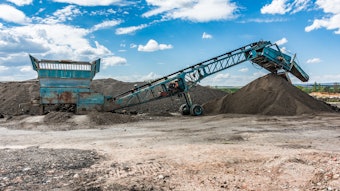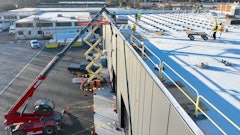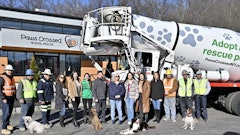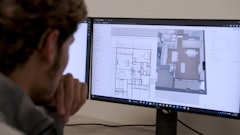For as much as a buzzword as “sustainable” has become in the industry, it’s not really clear what it means - especially for construction contractors.
According to the Organization for Economic Co-operation and Development (OECD), sustainable construction involves issues such as the design and management of buildings; materials performance; construction technology and processes; energy and resource efficiency in building, operation and maintenance; robust products and technologies; long-term monitoring; adherence to ethical standards; socially viable environments; stakeholder participation; occupational health and safety and working conditions; innovative financing models; improvement to existing contextual conditions; interdependencies of landscape, infrastructure, urban fabric and architecture; flexibility in building use, function and change; and the dissemination of knowledge in related academic, technical and social contexts.
That’s a mouthful. For our purposes at Sustainable Construction magazine, we plan to focus on the construction technology and processes involved on jobsites that can reduce a contractor’s carbon footprint. Does this mean Tier 4 and beyond? Yes. Is it being a part of construction on buildings that become LEED certified? Yup. Is it the application of building information modeling (BIM) software as a part of the design-build process? Absolutely. Does it involve implementation of telematics to better manage and monitor your fleet? You know it!
We consider sustainability as any small step you can take as a contractor to improve your carbon footprint and, believe it or not, in the process potentially save money and/or enhance your profits. Your return on investment in “green” technologies and processes will come in the form not only of decreased emissions but also improved productivity, shortened time to project completion and reduced equipment and project costs. In addition, ROI may even come in the form of more work as project owners recognize you as a sustainable contractor. We plan to help you on the path to marketing that message, as well.
“When going green, investors tend to look at the environmental impact of a project in terms of carbon emissions and other factors,” says Charles Haine, director, energy infrastructure consenting, Royal Haskoning DHV. “But that is all driven by how much fuel and electricity you are going to use in the operational phase. What people are missing is the embedded carbon in the steel and concrete, wood and asphalt. They need to consider all the contractors using their own diesel generators for years of construction. At the moment, no one is capturing that side of things – but emissions from these activities are a significant part of the footprint.”
In fact, there is at least anecdotal evidence from one study that analyzed the carbon footprint of a 40-year build (in this case, a shipping port). According to Haine, the study concluded that 50% of the carbon footprint would be from the initial construction phase, embedded in the construction activities and materials before even a single ship was handled.
Imagine being able to walk in and bid that job as a “green contractor.” One that knows its machines reduce emissions by 20%, knows how much fuel the job will save if materials are obtained from local sources and can speak to how using new technology such as telematics is not just good for the environment, but also good for the pocketbook.
So how do you get there? We’re working toward content that can help you start to use sustainable practices in your fleet that will positively impact your bottom line.
Want us to cover a specific topic? Please let me know at [email protected]. The sustainable construction industry continues to grow and adapt as technology improves. There is always something new to learn, and we want to help!

![Img 1707[56]](https://img.forconstructionpros.com/files/base/acbm/fcp/image/2023/04/IMG_1707_56_.6437076c97961.png?auto=format%2Ccompress&fit=crop&h=191&q=70&rect=0%2C462%2C1920%2C1080&w=340)












![Glp Porsche 072723 465 64ee42287c29e[1]](https://img.forconstructionpros.com/files/base/acbm/fcp/image/2024/03/GLP_PORSCHE_072723_465.64ee42287c29e_1_.65e88b8589b9c.png?auto=format%2Ccompress&fit=crop&h=135&q=70&rect=0%2C520%2C2250%2C1266&w=240)











